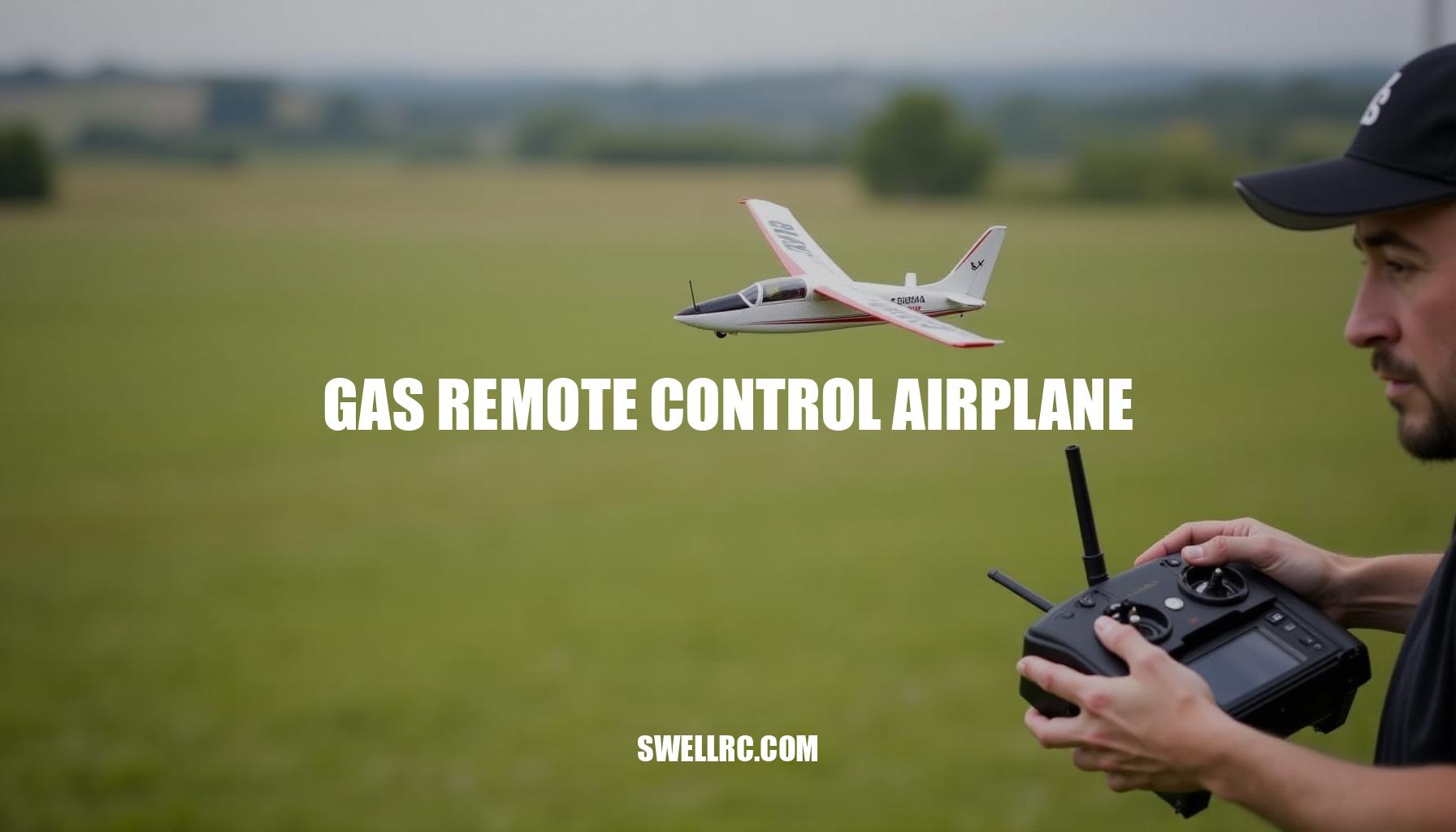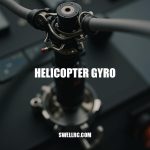The Thrill of Gas Remote Control Airplanes: A Beginner’s Guide
The first time I lit off a little gasoline two-stroke at the field, the air changed. The prop wash tugged at my sleeves, the exhaust had that warm, oily scent, and the fuselage hummed with a heartbeat you can feel in your palms. My thumbs shook through that maiden takeoff, but a few clicks of trim later the plane settled into a rock-steady groove—and that’s when the grin hit.
Gas remote control airplanes aren’t just about flying; they’re about the ritual of prepping an engine, the satisfaction of a perfect tune, and the long, confident laps that feel like real aviation in miniature.
In this guide, I’ll break down how gas RC planes work, how they differ from nitro and electric models, what performance you can expect, and how to choose, maintain, and fly one safely. You’ll get practical checklists, troubleshooting tips, and experience-backed recommendations without the hype—just honest enthusiasm for machines that growl, glide, and make every lap count. Whether you’re a seasoned pilot or new to the hobby aircraft scene, understanding the nuances of a gas remote control airplane versus other types of model airplanes will enhance your overall flying experience with your remote control airplane.
Understanding Gas Remote Control Airplanes: Power, Precision, and Personality
A gas RC plane is a model aircraft powered by a gasoline two-stroke or four-stroke RC engine running a premix of pump gas and oil (typically 32:1–40:1, per engine maker). This setup combines a radio transmitter, servos, and an ignition system, offering long flights, easy refueling, and that unmistakable engine note that enthusiasts love.
When comparing gas engines to other power options like nitro fuel and electric setups, each has distinct advantages:
| Type | Fuel/Power | Benefits | Considerations |
|---|---|---|---|
| Gas RC Plane | Gasoline + oil premix | Strong torque, lower fuel cost per flight, longer flight times, supports larger airframes | Requires ignition battery, needs careful vibration management |
| Nitro (Glow) | Methanol/nitromethane/oil mix | Lighter airframes, excellent throttle response | Shorter flights, higher fuel cost, produces more residue |
| Electric RC Airplane | Batteries and ESCs | Clean, quiet, instant torque, minimal maintenance | Shorter flight times unless large battery packs used; recharge time required |
Delving deeper into gasoline options, the choice between a two-stroke RC engine and four-stroke RC engine impacts performance and experience:
- Two-stroke RC engine: Lighter and simpler, delivering excellent power-to-weight ratio and sharp aerobatic punch. This is the classic choice for 20–60cc sport and aerobatic models.
- Four-stroke RC engine: Heavier but produces a smoother, more realistic engine sound, with better fuel efficiency and scale-like throttle feel. Favored by warbird and scale enthusiasts aiming for authenticity.
If electric planes are the Teslas of the sky—with instant torque and clean operation—then gas models are the classic muscle aircraft, roaring with a growling engine and ready for extended adventures. For those comparing model categories and seeking specific recommendations, see our best gas-powered RC planes. To explore a contrast in speed and feel, check out modern EDFs like the RC F-35 jets.
Flight Performance: Why Gas-Powered RC Planes Stand Out
From the first throttle push, you quickly understand why many experienced pilots choose gas RC planes for their superior performance. Gas engines deliver bigger props and steady torque, complemented by fuel that weighs less per minute of flight, allowing you to spend more time airborne and less time tethered to the charger. Here’s what to expect with typical gas setups:
- Flight time: Typically about 20–45 minutes on common 20–40cc configurations; with larger tanks and efficient tuning, you can extend flight durations even further.
- Durability: Properly maintained gas engines offer impressive engine durability, often running for hundreds of hours before requiring major overhauls.
- Fuel efficiency: Four-stroke engines sip fuel conservatively, while two-strokes offer a punchier experience, trading a bit of fuel efficiency for power.
- Handling: Heavier airframes provide excellent handling stability, tracking straighter in windy conditions and carrying energy gracefully through aerobatic sequences.
The top performance advantages of gas models include long, consistent flight durations with quick refuel turnarounds, strong midrange torque perfect for big props and STOL (Short Takeoff and Landing), and excellent energy retention ideal for graceful patterns and scale flying enthusiasts. Moreover, their robust airframes accommodate the weight of added systems seamlessly, and their rockets of repeatability let you set the needle valves, note weather conditions, and enjoy predictable sorties every time.
An anecdote: I chased a midrange stumble for weeks before learning that my low needle valve was a quarter-turn lean to compensate for the summer heat. Just one tweak and a new fuel filter later, the idle steadied at 1,900 rpm, and those nerve-wracking dead-sticks vanished. Enhancing your flight experience further, a modern RC plane gyro can smooth out gusty winds and make takeoff rolls effortless.
Additionally, exploring world models RC planes helps you align airframe design with your specific performance goals, whether you’re focused on aerobatic RC planes or realistic scale models.
Choosing the Right Gas RC Plane: Matching Skill to Machine
Choosing the best gas remote control airplane for beginners or seasoned pilots involves aligning your skills, field of interest, and budget. Your future self will thank you for a thoughtful selection. Here are some quick steps to guide you:
- Define your mission: Are you looking for a trainer, a scale warbird, or an aerobatic/3D plane?
- Match engine size to airframe: Beginners often choose 15–20cc high-wing trainers; intermediates prefer 30–40cc sport or aerobatic models; experts lean towards 50–120cc giant-scale planes.
- Wing type and loading: High-wing trainers are forgiving and stable; mid or low wings offer crisper handling; larger wingspans improve floating capabilities.
- Weight and transport: Can you comfortably carry and store an 80–100 inch model?
- Radio and support gear: Ensure your radio transmitter has enough channels, throttle cut, a reliable ignition kill, and quality servos for precision.
- Budget for spares: Don’t forget props, spark plugs, ignition batteries, fuel, and a starter or chicken stick.
Below is a concise comparison to help you choose based on your experience level and preferences:
| Category | Engine Size | Wing Type | Wing Span (inches) | Features |
|---|---|---|---|---|
| Beginner-friendly | 15–20cc | High-wing trainer | 70–80 | Tricycle gear, stable, easy landings |
| Intermediate | 30–40cc | Mid/low-wing sport or aerobatic | 72–78 | Sharper response, mild 3D capability |
| Expert | 50–120cc | 3D or scale warbird | 85–120 | Demanding setup, high-energy maneuvers, retracts/scale systems |
If you’re interested in alternative paths like jets or foam builds, consider the KT RC foam aircraft fighter jet for an electric experience, or classic RC balsa glider kits to develop airframe skills.
For cross-training, gas-powered RC truck kits (link) help sharpen fueling and tuning knowledge without needing a runway.
Personal tip: Invest wisely in your radio transmitter, servos, and linkages. A precise RC flight controller and tight control geometry will make handling any gas plane, whether a beginner model or advanced warbird RC airplane, feel easier and more responsive.
Engine Maintenance, Fuel Choices, and Troubleshooting
RC gas engine maintenance rewards consistency, ensuring seasons of reliable flying with just a little care after every session. Establishing a solid routine checklist keeps your engine in peak condition and prevents common issues. Here’s a comprehensive guide to help you maintain your gas-powered engine effectively, covering everything from fuel mix to troubleshooting RC engines.
| Maintenance Item | Details | Recommended Frequency |
|---|---|---|
| Fuel Mix | Use fresh, ethanol-free gasoline when possible; mix at manufacturer’s recommended ratio (often 32:1–40:1) with quality 2T oil. | Before each session |
| Filters | Keep in-line and clunk fuel filters clean; replace regularly to avoid clogging. | Monthly or per flight hours |
| Spark Plug Maintenance | Inspect spark plug color and gap; clean when necessary and always carry a spare (common type: NGK CM6). Replace if fouled. | Every 5-10 flights |
| Ignition | Secure ignition leads, verify kill switch operation, and separate ignition wiring from receiver gear to prevent radio interference. | Before every flight |
| Carburetor and Needle Tuning | Tune low/high needles seasonally; confirm idle RPM and smooth throttle transitions. | Seasonally or as required |
| Hardware | Check prop bolts, muffler bolts, engine mount integrity, and isolate vibration with soft mounts where possible. | Before each flight |
| After-Run Care | Drain fuel tank, run engine dry, and wipe down the airframe to prevent corrosion and residue buildup. | After every flying session |
Understanding the nuances between nitro fuel vs gas engines can help tailor your maintenance approach, but many shared principles apply. When troubleshooting RC engines, common problems like hard starting or poor idle can often be resolved by checking choke sequences, spark plug condition, and needle settings. For example:
- Hard starting: Verify choke sequence, prime lines, spark quality, and replace spark plug if needed; confirm needle baseline settings.
- Poor idle/stall: Enrich low needle about 1/8 turn; inspect for air leaks, cracked fuel lines, or dirty carburetor.
- Midrange stumble: Balance low and high needles, replace or clean fuel filters, and ensure proper tank venting.
- Overheating: Use a smaller prop (prop down) to increase load, richen high needle slightly, and verify cowl airflow and baffling.
- Vibration: Balance prop and spinner, inspect hub, add soft mounts, and ensure prop bolts are torqued correctly.
- Radio interference: Separate ignition and receiver wiring; use shielded leads, opto-kill switches, and a dedicated ignition battery to minimize noise.
Tuning frequency depends on usage intensity and environmental conditions, but establishing a regular schedule aligned with the above checklist is ideal for longevity and performance.
For enthusiasts intrigued by advanced propulsion, exploring remote control jet engine technology reveals how different principles impact maintenance and tuning approaches compared to gas engines. Similar shared techniques exist across rotorcraft, as seen in gas-powered remote control helicopter and gas-powered RC helicopter reviews.
By nailing this routine, you’ll enjoy that perfect combination: a crisp throttle response and trustworthy idle, weekend after weekend, transforming your gas engine experience into a true flying pleasure.
Getting Started: Safety, Setup, and First Flight Experience
When preparing for an RC flight, following a comprehensive pre-flight checklist is crucial to ensure a safe and enjoyable experience. For the gas RC plane setup, start by checking the airframe: ensure control throws are set according to the manual, there is no slop in linkages, the center of gravity (CG) is correct, all linkages are secured, and failsafe along with throttle cut are properly configured. The engine requires fresh fuel mix, intact leak-free lines, needles adjusted to baseline, and a warm-up at low rpm before taxiing.
On the radio transmitter side, perform a range check, confirm packs are charged, orient antennas correctly, set dual rates and expo, and assign an ignition kill switch to enhance control. Don’t forget your field gear: always bring a fire extinguisher, gloves or a chicken stick, spare glow plug, tools, and a spare propeller.
Adhering to safety precautions is equally important. Use safe start methods by keeping clear of the prop arc, restraining the model, and utilizing gloves or a starter.
Choose open AMA-style fields to operate, respect noise regulations and local rules, and maintain proper flight patterns. At the pits, ensure propellers point outward, avoid run-ups in crowded areas, and announce takeoffs and landings clearly to those around you.
For beginners, some common mistakes to avoid include over-lean tuning which compromises cooling; instead, keep the mix slightly rich during early flights. Do not rush the maiden flight; conduct taxi tests and high-speed runs before actual takeoff.
Always perform a range check and verify throttle cut setup to prevent loss of control. When approaching downwind, keep the flight pattern predictable and land into the wind for maximum stability.
On my recent maiden flight with a 30cc sport ship, I followed my RC flight controller and radio transmitter setup precisely. I taxied long enough to feel the rudder engagement, smoothly rolled on, and climbed steadily to altitude.
After one lap and making minor trim corrections — two clicks of right aileron and one click down elevator — the plane settled into stable flight. After about twenty-five minutes, I executed a slightly nose-high, but smooth landing. That calm, satisfied exhale at shutdown reminds me why proper preparation and adherence to beginner tips make all the difference.
Conclusion: The Joy and Craftsmanship Behind Gas RC Aviation
Gas RC flying is truly a patient craft, demanding both dedication and a willingness to learn. When you first start with a gas remote control airplane, you might fumble with needles, chase elusive vibrations, and wonder why today’s idle feels so different from last week’s. But eventually, everything clicks.
Suddenly, you’re carving long, confident lines through the sky and landing with fuel to spare, proud of a hobby aircraft that runs not by chance, but because you made it run well.
Here are some key takeaways that highlight what makes this experience so rewarding:
- Power and control you can genuinely feel and trust in every maneuver.
- Customization that invites curiosity and personal expression, allowing your aircraft to evolve as your skills do.
- A supportive RC community that embraces newcomers and veterans alike, fostering continuous learning and camaraderie.
- A promise of lifelong enjoyment through ongoing refinement that keeps your passion alive and fresh.
If this sounds like your kind of journey, we invite you to come join the RC community at the field. Bring your questions, a spark plug, and your best grin — because we’ve all been where you are, and we’re all still learning together.
Frequently Asked Questions
- What is the best gas remote control airplane for intermediate pilots?
A 30–40cc low- or mid-wing sport/aerobatic model hits the sweet spot: enough weight to track well, enough power for uplines, and manageable size for transport. Look for sturdy landing gear, quality hardware, and room for reliable ignition and radio installs. For curated picks, see best gas-powered RC planes (https://www.swellrc.com/best-gas-powered-rc-planes/). - How do gas-powered RC planes differ from electric models?
Gas planes run gasoline/oil with an ignition system; they offer longer flights, quick refueling, and that classic engine sound but require tuning, vibration management, and more safety precautions. Electric planes are cleaner and quieter with minimal maintenance and instant torque, but typical flight times are shorter and recharging takes longer. - How long can a gas RC airplane fly on a full tank?
Most 20–40cc setups fly roughly 20–45 minutes depending on tank size, prop load, tuning, and throttle use. Four-stroke engines and efficient cruising can push longer; aggressive aerobatics will shorten duration. - What type of maintenance does a gas RC plane engine require?
Routine tasks include mixing fresh fuel at the correct ratio, keeping filters clean, checking and occasionally replacing the spark plug, verifying ignition wiring, seasonally adjusting carb needles, and inspecting bolts and mounts for vibration. Drain the tank and wipe the airframe after flying. - Are gas-powered RC planes faster than electric ones?
Not inherently. Top speed is more about airframe and prop/EDF setup. Gas excels in endurance and torque with big props, while high-voltage electrics can deliver blistering peak speed. Many gas models favor strong climb and authority over outright top speed. - Can I convert my electric RC airplane to gas-powered?
Usually it’s impractical. Electric airframes lack the structure, firewall strength, fuel system accommodations, and vibration isolation needed for a gas engine. It’s safer and cheaper to start with a purpose-designed gas airframe. - What safety precautions are necessary when flying a gas remote control airplane?
Use a throttle cut and ignition kill switch, restrain the model during start, keep clear of the prop arc, wear gloves or use a starter, perform range checks, fly in approved fields, and announce takeoffs/landings. Secure wiring and hardware to prevent vibration-related failures.



